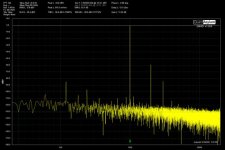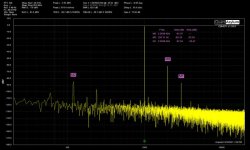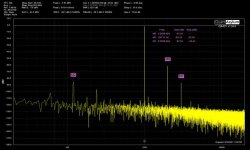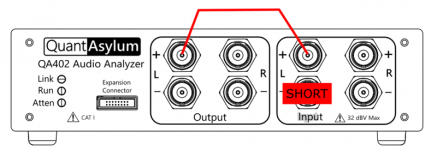There are some good groups around here where people post descriptions and pictures of walks they've been on. It's possible to use FB without it using you.I deleted my FB account, evil sobs as far as I'm concerned, but thanks. 🙂
Yes, unfortunately. Prices tripled when they went to international didtribution instead of selling direct. From this side of th eponf, looks like Sonido is a solid alternative (i haven’t heard either, have done a couple boxes for them).
dave
I hadn't heard of those.... will have a look.
Thanks
Thompsontechs, I just noticed your observation of somewhat low output on speakers with the SIT-3. I own a SIT-3 also and it's a very fine amp. I own a vintage set of Spica TC-50 speakers that I've owned since new. They are inefficient speakers at 84 db@1 watt. They have a very smooth impedance curve that hugs the 4 ohms level though. That's ideal for the SIT-3 as it puts out about 30 some watts at that impedance.
I found that the power level the 3 put out was fine even for those inefficient speakers but the signal voltage amplification was a little low. Happily I can select 6 volt output levels out of my DAC instead of the standard 2. That's all it needed to get it up on its feet and dance. No sign of clipping even at high volumes. If I was using it in a larger room I'm not so sure it would be enough. In my 16' x 17' room it works beautifully. You may have something similar going on.
I found that the power level the 3 put out was fine even for those inefficient speakers but the signal voltage amplification was a little low. Happily I can select 6 volt output levels out of my DAC instead of the standard 2. That's all it needed to get it up on its feet and dance. No sign of clipping even at high volumes. If I was using it in a larger room I'm not so sure it would be enough. In my 16' x 17' room it works beautifully. You may have something similar going on.
When I said "no sign of clipping even at high volumes" I meant no audible signs. I didn't measure it. I think the consensus view from Nelson and most of the audio press is that the SIT-3 sounds best (generally) on speakers with smooth impedance curves that are mostly as 4 ohms. It's probably the case that when I'm cranking it up in my system the distortion is increasing simultaneously with the volume but it just doesn't sound that way to my ears. If I was to guess what the magic of the '3' is my guess would be that 2nd harmonic distortion increases at higher volume levels and this creates the bloom that is so satisfying with this amp.
I'm not at all surprised that your passive pre didn't cut it. It needs a pre with some low impedance authority to drive it. Just my opinion. Value that advice by what you paid for it.
I'm not at all surprised that your passive pre didn't cut it. It needs a pre with some low impedance authority to drive it. Just my opinion. Value that advice by what you paid for it.
oh yes
these amps, even if having high input impedance, are demanding absolute pinnacle preamp
any less than that, no way of showing their full potential
these amps, even if having high input impedance, are demanding absolute pinnacle preamp
any less than that, no way of showing their full potential
Finally decided to learn how to use some test equipment that has been here for over a year. 🙂 It's going to be a steep curve for me, but here's a quick 1k grab from the SIT
Attachments
Last edited:
pics too small resolution
anyway, you can compare these to Stereophile measurements, and also to DEFiSIT graphs
anyway, you can compare these to Stereophile measurements, and also to DEFiSIT graphs
Well click on them Z they get bugger, 😛 I enlarged the one a bit for ya.
Attachments
Last edited:
I did, still can't see numbers
only when I save it on my comp and open in whatever, I can zoom it and see numbers
720x480 is not showing details here
I can see that you have fundamental at 0db
keep it at -10dbfs, everything is more controlled that way
only when I save it on my comp and open in whatever, I can zoom it and see numbers
720x480 is not showing details here
I can see that you have fundamental at 0db
keep it at -10dbfs, everything is more controlled that way
Thanks for the tip, I can use all the help I can get... wish I had someone close that knew it all, so I could do the Cliffs notes version.
Nice toy (QA401) JT! I have a 402 on order but have to wait until export requirement are satisfied (my assumption).
Clip a meter across the output and when you measure 2.83VAC you have 1W output and you can take your 'official' THD @1W into 8R or 4R measurement from there.
Others with actual knowledge can chime in here but I have also noticed that 1W or 2.83VAC also seems to correspond with -7.3dBfs in my REW readings. Trying to get fundamental (1KHz) up to 0dBfs is driving the amp pretty hard which is what ZM's comment is alluding to.
Congratulations on being an unofficial FW SIT-3 technician
Clip a meter across the output and when you measure 2.83VAC you have 1W output and you can take your 'official' THD @1W into 8R or 4R measurement from there.
Others with actual knowledge can chime in here but I have also noticed that 1W or 2.83VAC also seems to correspond with -7.3dBfs in my REW readings. Trying to get fundamental (1KHz) up to 0dBfs is driving the amp pretty hard which is what ZM's comment is alluding to.
Congratulations on being an unofficial FW SIT-3 technician

Thanks Twitchie, I started reading the manual for the 401 and it's didn't understand half of it.
I need a picture book or videos!
I need a picture book or videos!
The amplifier undergoing testing is powering the load resistor so I don't think it cares about 0dB at the test rig. I use REW with a Focusrite USB sound card and I have found that 0dB will overload the Focusrite/REW, so a lower level signal sent to the test rig will reduce the possibility of the test rig affecting the test result. But perhaps the QA401 is different.
I also use a attenuation circuit from Akitika (https://www.akitika.com/documents/BuildingTheAttenuatorRev4.pdf) so there is no exact correlation between voltage and dBfs.
I also use a attenuation circuit from Akitika (https://www.akitika.com/documents/BuildingTheAttenuatorRev4.pdf) so there is no exact correlation between voltage and dBfs.
I have an Autoranger (thanks Jan!) in front of my soundcard (Focusrite) but the QA401 doesn't need an attenuator in front of it, you can just connect the DUT directly.
You have a good point Ben - it's not dbV that I have my REW set to so I should point that out for clarification - I am measuring in dbFS which doesn't seem to get affected by the attenuation. I'll have to do more reading on this
Gain structure: input and output levels - Biamp Cornerstone
You have a good point Ben - it's not dbV that I have my REW set to so I should point that out for clarification - I am measuring in dbFS which doesn't seem to get affected by the attenuation. I'll have to do more reading on this
Gain structure: input and output levels - Biamp Cornerstone
@JT how do you have the output from the SIT-3 connected to the QA401? Do you have it connected on both the IN+ and IN- or are you just connecting to one of those? I think you need to use shorting plug if you aren't connecting both IN+ and IN-
Attachments
twitchie, I measure in dBFS also. I think it may be the autoranging that does it for you. With a sound card, I can manually adjust the input level of the sound card or use external attenuation for dBFS or dBV. I use external attenuation because the Focusrite is supposed to have a input level sweet spot for self distortion level so I keep the Focusrite input level knob at a set location.
Thanks for the tip, I can use all the help I can get... wish I had someone close that knew it all, so I could do the Cliffs notes version.
In any case that is a good looking harmonic spectrum.
Thanks for the input Nelson. At this point the testing is more along the lines of learning the gear with a known quantity. I trust John's measurements, so I can duplicate and see if I'm in the ball park as a sanity check.
- Home
- Amplifiers
- Pass Labs
- SIT-3




